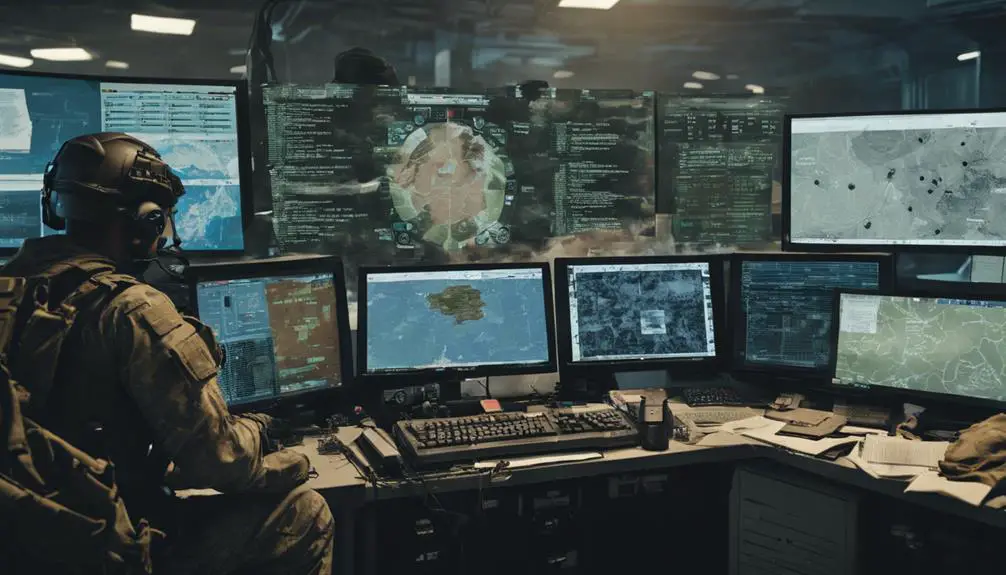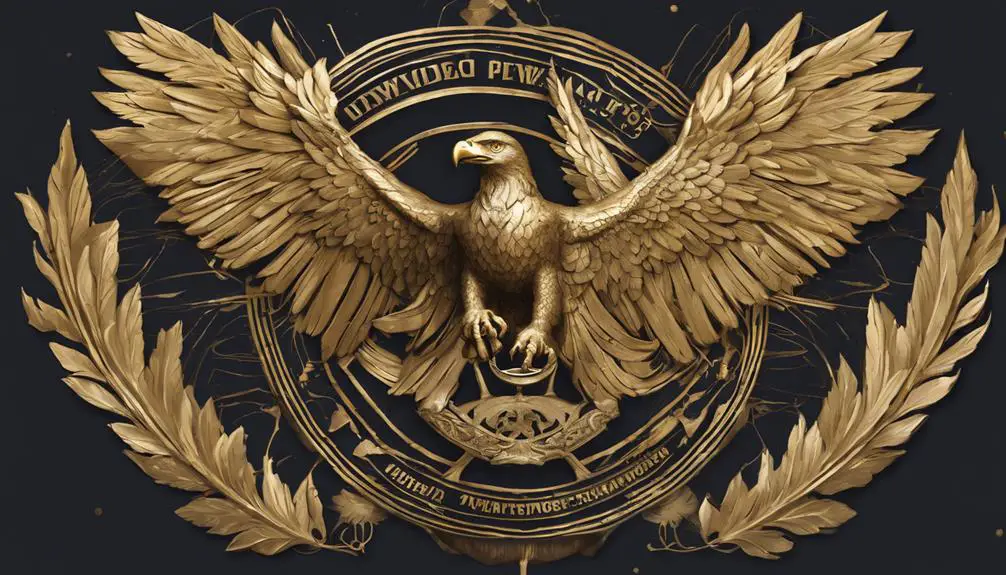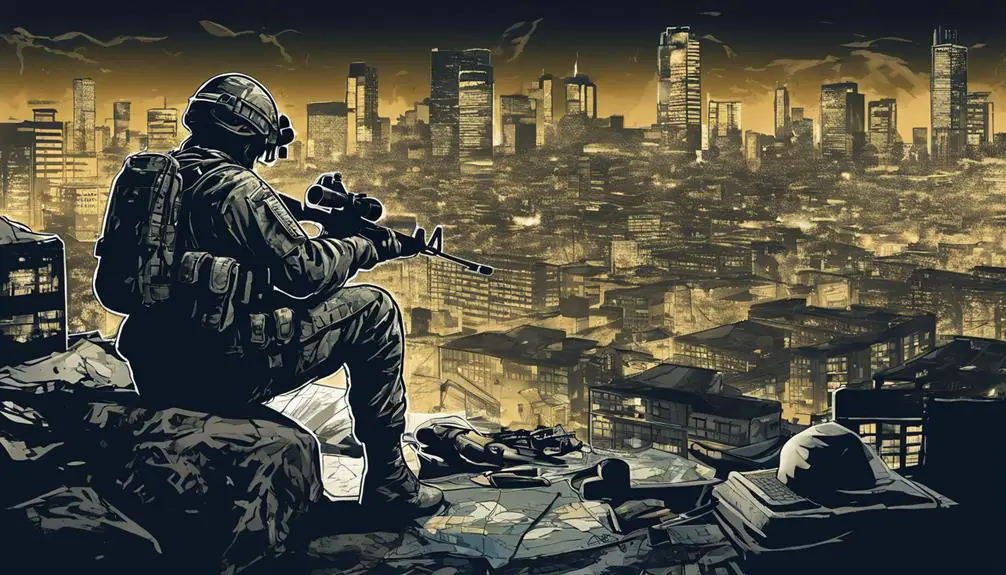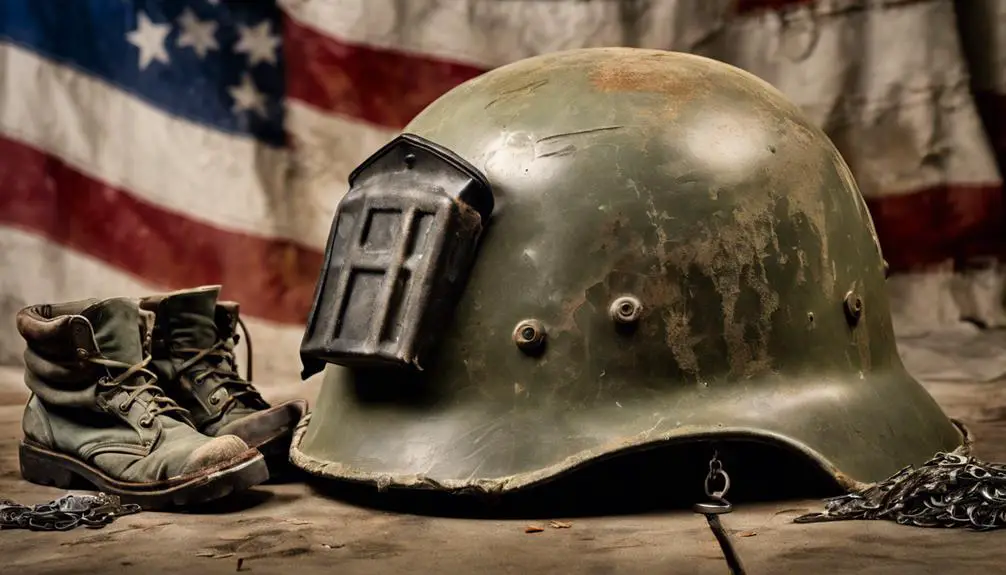You're about to explore the world of military communication, where acronyms, slang, and jargon dominate daily conversations. Understand that military language is unique, with abbreviations like 'Oscar Mike' (on the move) and 'HOOAH' (expressing enthusiasm). You'll learn that 'chow' means food and 'rack' means bed. Familiarize yourself with military ranks and positions, like 1LT and PVT. Be aware that tactical operations have their own terminology, ensuring clear communication in high-stress environments. As you venture further, you'll uncover the complexities of military slang and gain a deeper appreciation for the culture behind it.
Acronyms in Military Communication

In military communication, you'll frequently encounter acronyms that shorten complex phrases into concise abbreviations, saving time and improving clarity in high-stress situations. These abbreviations are important in facilitating swift and accurate communication, which is essential in military operations.
Decoding abbreviations is necessary to comprehend military communication. You'll need to be familiar with acronyms like SOP (Standard Operating Procedure), COA (Course of Action), and SITREP (Situation Report) to stay on top of the conversation.
The evolution of acronyms in military communication is a continuous process. New acronyms are being created to address emerging needs, while others are modified or retired as circumstances change.
As you engage with military personnel or documents, you'll encounter a wide range of acronyms that may seem challenging at first. However, with practice and familiarity, you'll become proficient in decoding abbreviations and understanding the language of military communication.
Battlefield Slang and Jargon
You'll also explore battlefield slang and jargon, which serve as a shorthand language among military personnel, allowing them to quickly convey complex ideas and emotions in high-pressure situations. This unique language helps troops communicate efficiently, often using abbreviations, acronyms, and colloquialisms to convey critical information.
For instance, a 'War Cry' is a unit's distinctive battle cry, used to intimidate the enemy and boost morale. Meanwhile, a 'Combat Code' refers to the set of rules and protocols governing military operations.
In the heat of battle, using slang and jargon helps soldiers conserve mental energy and focus on the task at hand. Phrases like 'HOOAH' (expressing enthusiasm or approval) or 'Oscar Mike' (meaning 'on the move') become an integral part of military culture.
By immersing yourself in this language, you'll better understand the nuances of military communication and gain insight into the mindsets of those on the front lines.
As you explore further into the world of military slang, you'll discover a rich tapestry of expressions, each with its own history and significance.
Military Rank and Position Abbreviations

As you navigate the military world, you'll encounter a plethora of abbreviations that identify ranks and positions. Military personnel rely on a range of abbreviations to quickly identify ranks and positions, from CO (Commanding Officer) to NCO (Non-Commissioned Officer), which helps facilitate efficient communication and clear chain of command.
These abbreviations are essential in understanding the Rank Structures within the military. You'll come across abbreviations like 1LT (First Lieutenant), CPT (Captain), and MAJ (Major), which denote Officer Roles. These designations are vital in establishing a clear hierarchy and facilitating effective communication.
In addition to Officer Roles, you'll encounter abbreviations for Enlisted Personnel, such as PVT (Private), SPC (Specialist), and SGT (Sergeant). These abbreviations are used to identify an individual's rank and position within the military, making it easier to understand their role and responsibilities.
Familiarizing yourself with these abbreviations will help you better understand the military's organizational structure and improve your communication with military personnel.
Everyday Military Expressions
Beyond the world of rank and position abbreviations, military personnel use a distinct language filled with colloquialisms and slang that can be both fascinating and confusing to outsiders.
You may hear them use 'civvy lingo,' a term used to describe civilian slang, to differentiate it from military jargon.
In your daily interactions with military personnel, you'll notice they use unique expressions in their everyday conversations. For instance, when they say 'chow,' they're referring to food, and 'mess hall' is where they eat. You might also hear them say ' Latrine' instead of bathroom or 'rack' instead of bed.
These everyday expressions are an integral part of military culture, and understanding them can help you better communicate with military personnel. By familiarizing yourself with these colloquialisms, you'll gain a deeper appreciation for the military's unique language and culture.
Tactical Operations Terminology

In high-stress combat environments, tactical operations terminology serves as an essential component of effective communication among team members. You'll frequently hear terms like 'situational awareness' and 'battlefield management' in these situations.
Mission planning is a vital aspect of tactical operations, where you'll develop and refine strategies to achieve objectives. This involves identifying key targets, allocating resources, and assigning tasks to team members.
During mission planning, you'll also discuss firepower deployment, which involves coordinating and directing firepower to achieve tactical objectives. This might include calling in artillery or air support, or deploying infantry units to secure a location.
As you execute the mission, you'll use tactical operations terminology to communicate with your team, providing clear and concise instructions to ensure everyone is on the same page.
In the heat of battle, every second counts, and using standardized terminology helps prevent confusion and ensures a unified response. By mastering tactical operations terminology, you'll be better equipped to communicate effectively with your team, making you a more effective and efficient operator in high-stress environments.
Military Slang for Equipment
You'll often hear military personnel using slang terms to refer to their equipment, such as 'brass' for bullets or 'bird' for helicopter. This Gear Terminology is an integral part of military communication, allowing soldiers to quickly and efficiently convey information about their Weapon Nicknames.
For instance, a '50 cal' refers to the M2 Browning machine gun, while a 'Saw' denotes the M249 light machine gun. You might also hear 'Eleven Bravo' used to describe an infantryman's job, or 'Deuce and a Half' to refer to a 2.5-ton cargo truck.
Understanding these slang terms is essential for effective communication in high-pressure situations. By using shorthand phrases, military personnel can quickly convey critical information about their equipment, saving precious time and lives.
Additionally, this specialized language helps to foster a sense of camaraderie and shared experience among military personnel. By familiarizing yourself with these terms, you'll gain a deeper understanding of the military's unique culture and lingo.
Frequently Asked Questions
What Is the Origin of the Term "Grunt" for an Infantry Soldier?
You're wondering about the origin of the term 'grunt' for an infantry soldier. It's a term steeped in battlefield etymology and infantry folklore.
The term emerged during the Vietnam War, when infantrymen were referred to as 'grunts' due to the sound they made while lugging heavy packs and equipment. This nickname stuck, symbolizing the tough, rugged nature of infantry soldiers.
You'll find this term used to describe the backbone of any military operation – the brave men and women on the front lines.
Are Military Slang Terms Used Universally Across All Branches?
You might assume that military slang terms are used universally across all branches, but that's not the case. While some terms do transcend branch boundaries, others are specific to certain branches or even units.
Branch variations in slang exist due to unique cultural and operational differences. Universal adoption of slang is rare, as each branch has its own distinct identity and language.
Is Military Slang Only Used in Combat Zones or During Wartime?
You might think military slang is only used in combat zones or during wartime, but that's not the case. In reality, military slang is used in both peace time and on the front lines.
Even in training exercises or everyday conversations, soldiers use slang to quickly communicate and bond with their comrades. It's an integral part of military culture, not limited to combat situations.
Can Civilians Use Military Slang in Everyday Conversation?
You might wonder if you can use military slang in everyday conversation. While it's not uncommon to see civilians adopting military slang, it's crucial to take into account cultural appropriation.
Before using military slang, ask yourself if you're disrespecting the origins and history behind the terms. Be mindful of social norms and the potential impact of using language that may not belong to you.
Use discretion and respect the cultural context to avoid unintended offense.
Are Military Slang Terms Officially Recognized by the Military?
You might think the military has a secret language, but when it comes to officially recognizing slang terms, the answer is no.
Unlike a treasure chest overflowing with formal classifications, military slang isn't formally documented or officially recognized. You won't find it in official documentation or policy manuals.
It's more of an unofficial, grassroots phenomenon that emerges from the trenches of military culture. So, while slang might be widely used, it's not formally sanctioned by the military brass.
Conclusion
You've now deciphered the code of common military words and slang, revealing the secrets of the armed forces' unique language.
Like a seasoned veteran, you can navigate the battlefield of acronyms, jargon, and tactical terminology with ease.
Your newfound knowledge is your ammo, empowering you to communicate effectively with military personnel and decode the mysteries of military speak.
Stay vigilant, and remember: in the world of military communication, clarity is key to mission success.







